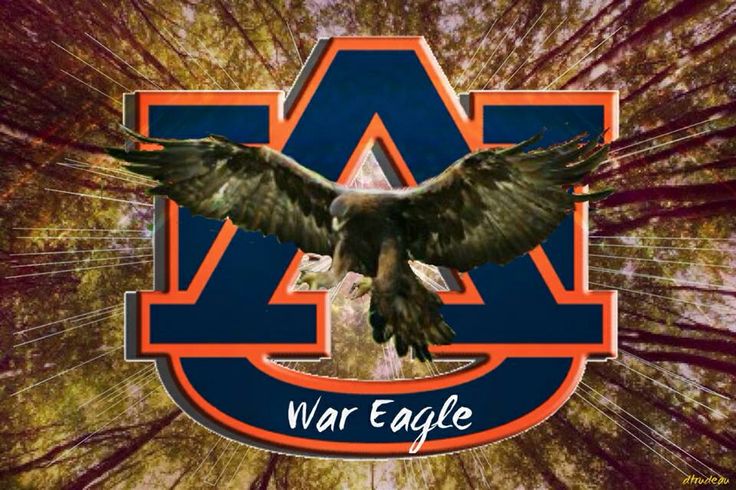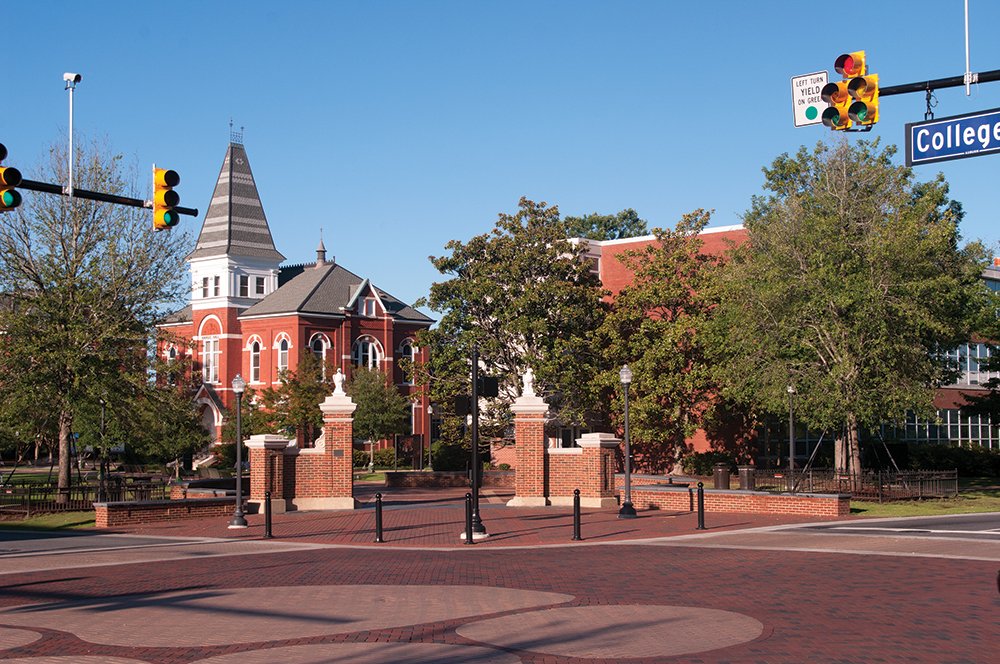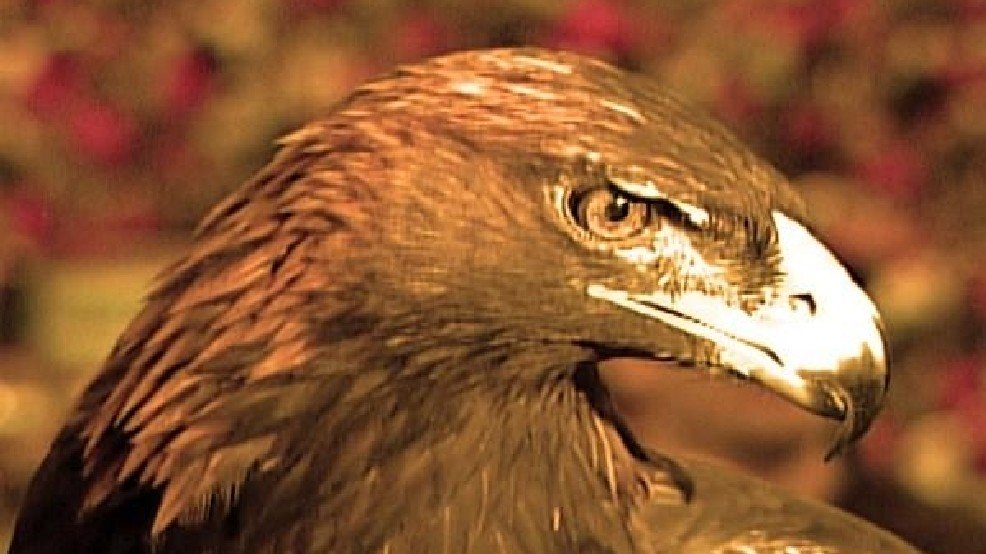Jordan Hare Stadium Is The 15th Largest In College Football
Jordan Hare Stadium is the home of the Auburn Tiger’s football team and has a very long and interesting history.
It is located at 251 S. Donahue Drive on the Campus of Auburn University, just south of Shug Jordan Parkway, which is old US highway 267.
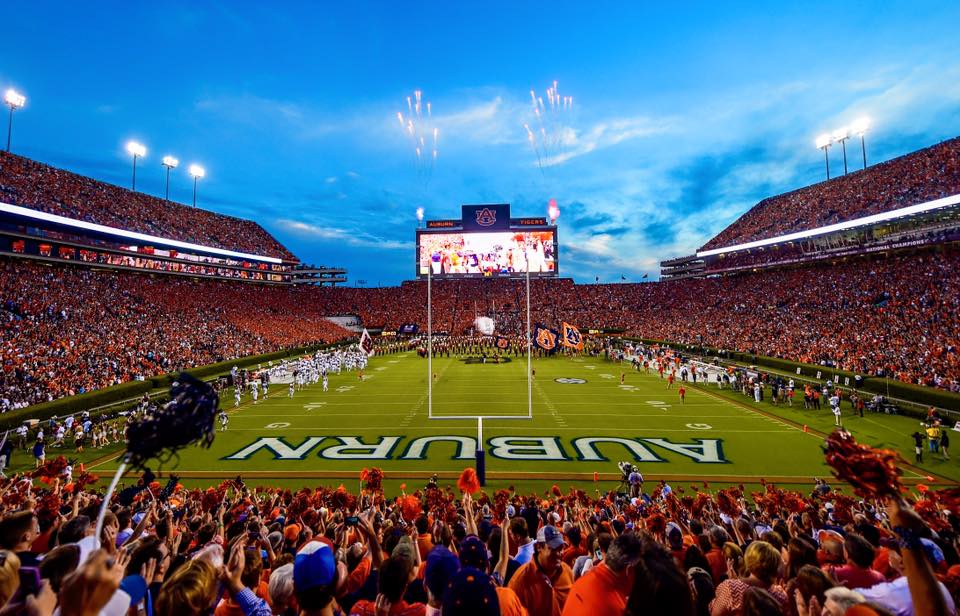 Jordan Hare Stadium Excitement
Jordan Hare Stadium ExcitementIt is beyond a doubt one of the most traveled to Alabama backroads sites, for several different reasons.
The History of Jordan Hare Stadium
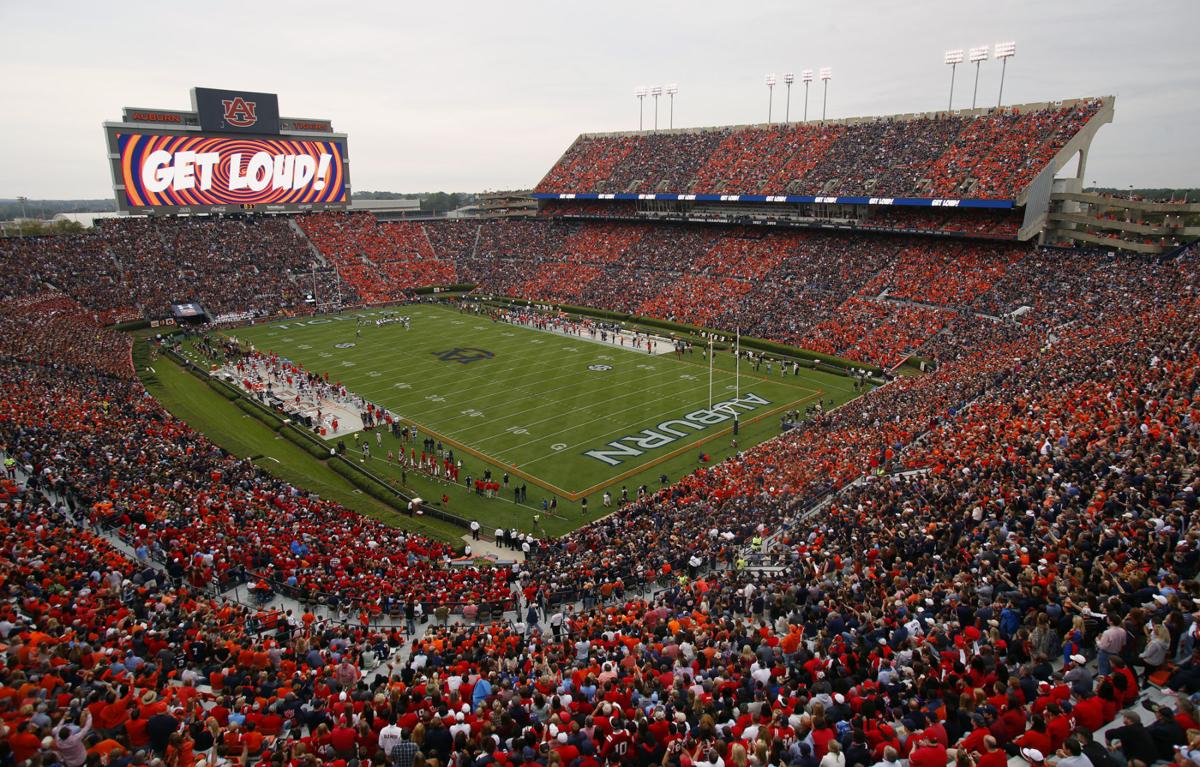 Jordan Hare Stadium on A Saturday in the Fall
Jordan Hare Stadium on A Saturday in the FallIt was originally used by the Auburn High School tigers from 1939 to 1947, but for the last 70 plus years it has been exclusively the home of the University of Auburn.
Jordan Hare Stadium was named after Ralph “Shug” Jordan who has the most wins in the school’s history, as well as Cliff Hare, who was on Auburn's first football team.
He was also the Dean of Chemistry as well as the President of the early Southern Football Conference.
However, all of that changed as on November 19, 2005, the playing field was named in the honor of Coach and Athletic Director Pat Dye.
It is now known as the Pat-Dye Field at Jordan-Hare Stadium.
While some “football” experts contend that it is not a big stadium compared to others, it is actually the 15th largest in the NCAA, at a capacity of 87,451.
Tiger stadium can be visited by any civic group that makes a reservation.
The athletic department provides free tours Monday through Thursday, from 9:00 AM to 3:30 PM.
The general public can also experience the pre-game locker room setup for the two teams, on Fridays prior to each home game.
Drake Field
Prior to 1939 the University played their games at Drake field instead of Jordan Hare Stadium.
Drake Field was a horrible situation as it was a bare bone only facility that had a capacity for 700 people.
Because of this situation, Auburn only played one home game a year, and played all other home games at “neutral sites”.
It was basically out of necessity that the school decided to build a permanent stadium, which was named Auburn Stadium.
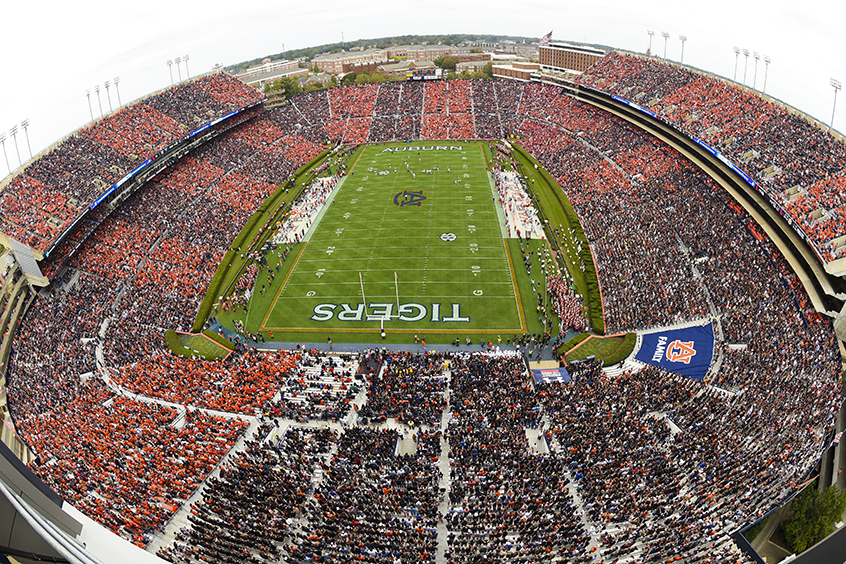 Jordan Hare Stadium Overhead View
Jordan Hare Stadium Overhead ViewThis new stadium hosted its first game on November 10, 1939, and the freshmen team of Auburn played the freshman team from Georgia tech.
The new stadium was officially dedicated on Thanksgiving Day November 30, 1939, when the Auburn played the University of Florida.
However, the stadium that was built was much, much different than Jordan Hare Stadium is today.
Its official capacity for years was a subject of debate.
It was officially listed with a capacity of 7,500, but that was only the number of seats listed in the west grandstand.
The west grandstands were the only official or permanent portion of the stadium; however, the wooden east grandstand could also be utilized.
In fact, when it was, and bleachers were added to each end zone, it doubled to a capacity of 15,000.
However, for the inaugural game the official attendance was listed as 7,290.
The Renaming of the Stadium
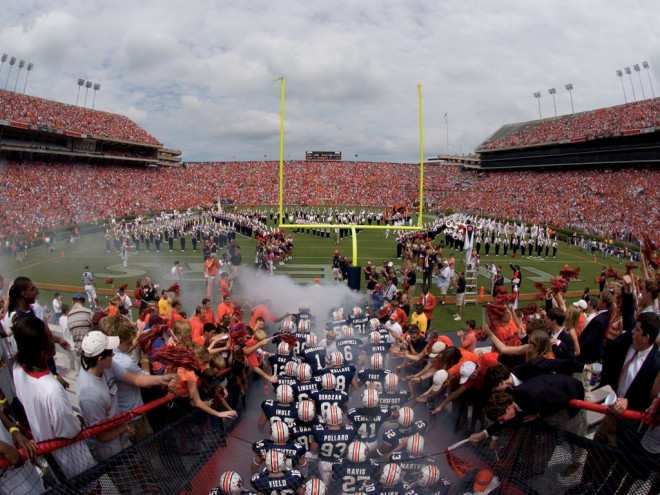 Auburn Entering the Field
Auburn Entering the FieldIn the early fall of 1947, the student body begin to push the administration to rename the stadium in honor of Dr. George Petri, who was the first football coach of the school's team.
He had just recently died, but the school did not rename the stadium at that time.
However, it was expanded in 1949 when the wooden bleachers of the east side were replaced with permanent seats, and more seats were added to the west grandstand as well.
This brought the new capacity to 21,500 and at that time it was renamed the Cliff Hare Stadium.
Shug Jordan became the head coach in 1951, and he was still coaching when his name was added in 1973.
This made it the first time the stadium was named after an active coach.
Here is the list of the seating capacity by year of Jordan Hare Stadium.
- 1939-1948—Capacity 15,000
- 1949-1954---Capacity 21,500
- 1955-1959---Capacity 34,500
- 1960-1969---Capacity 44,500
- 1970-1979---Capacity 61,261
- 1980-1986---Capacity 72,169
- 1987-1999---Capacity 85,214
- 2001-2003---Capacity 86,063
- 2004 to present—Capacity 87,451
As of this writing, Jordan Hare Stadium has the 15th largest seating capacity in major college football.
References
The History of Jordan-Hare Stadium, Part One: The War Eagle Reader
Sports in Alabama

Alabama Gift Store
Numerous Items for You and Your Family to Enjoy
See it here at the Gift Store
Copyright 2019-2023 Alabamabackroads.com
All Rights Reserved
